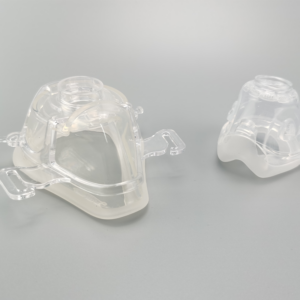Hello, today, we’ll delve into the fascinating world of silicones,plaese trust me, it’s not just about strengthening certain parts of our society. So let’s get down to the nitty gritty and explore the differences between these two versatile forms of silicone.Here, we explore the distinctions between these two forms of silicone.
- Physical State:
- Liquid Silicone: As the name suggests, liquid silicone is in a liquid state, characterized by high transparency. It is a food-grade and medical-grade material, molded without the addition of vulcanization agents. The molding process involves sealed feeding.
- Solid Silicone: In contrast, solid silicone is in a solid state and lacks liquidity. Similar to liquid silicone, it is a transparent and environmentally friendly material. However, vulcanization agents are added during molding to accelerate curing time, and open casting molding is employed.
- Usage Fields:
- Liquid Silicone: Primarily utilized in baby supplies, kitchenware, and medical products, liquid silicone is safe for direct contact with food and the human body.
- Solid Silicone: Findings its applications in daily necessities, industrial miscellaneous parts, and automotive components.
- Safety:
- Liquid Silicone: Recognized as a food-grade material, liquid silicone offers high transparency and safety.
- Solid Silicone: While also transparent, solid silicone requires the addition of vulcanization agents during molding.
- Molding Methods:
- Liquid Silicone (LSR – Liquid Silicone Rubber): Employing injection molding, the process involves injecting liquid silicone rubber into the mold using injection molding machines. This method ensures high precision, efficiency, and the ability to produce a wide range of high-temperature adhesive products.
- Solid Silicone: The raw material for solid silicone is a solid piece. It undergoes mixing, cutting, and molding under specific temperature and pressure conditions.
- Industrial Use:
- Liquid Silicone: Commonly used in various industries for applications such as baby products, kitchen tools, and medical devices.
- Solid Silicone: Widely applied as a catalyst carrier in fluidized bed operations in the industry.

- Catalyst Carrier Use:
- Solid Silicone: When used as a catalyst carrier, it is generated from water glass (sodium silicate), creating a gel through hydrolysis in an acidic medium. The resulting silica gel varies in pore structure, influencing the properties of the supported catalyst.
All in all, liquid and solid silicone are like a dynamic pair in different industries. Each of them has their own unique strengths and together they make a strong team. So the next time you encounter silicone magic in the medical field, pay tribute to these unsung heroes. If you still have some topic you are interested,please tell me!